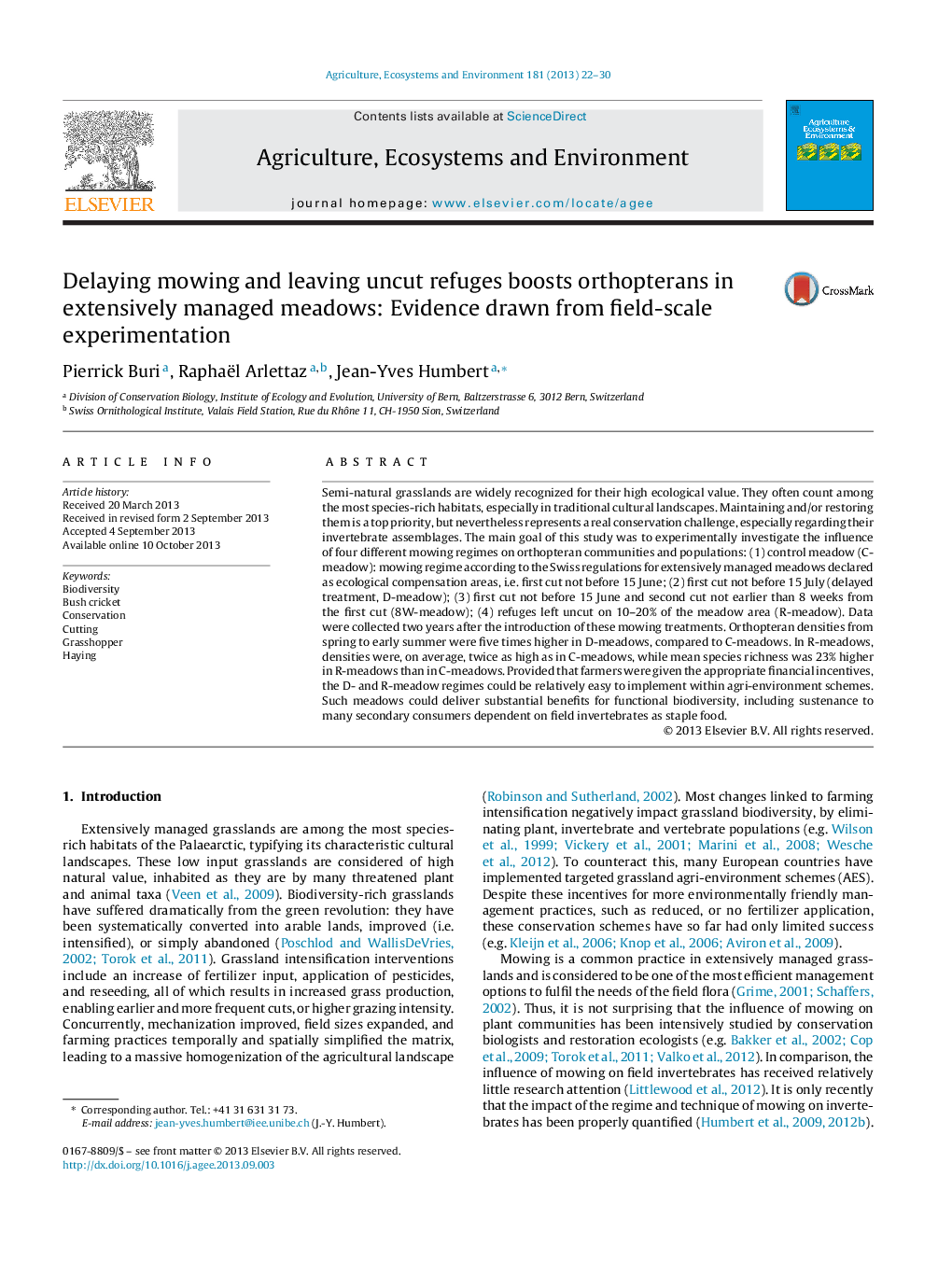| Article ID | Journal | Published Year | Pages | File Type |
|---|---|---|---|---|
| 2414131 | Agriculture, Ecosystems & Environment | 2013 | 9 Pages |
•Grassland conservation; responses of orthopterans to four different mowing regimes.•Delaying the first mowing date from 15 June to 15 July benefits orthopteran abundance.•Leaving uncut grass refuge when mowing benefits orthopteran abundance and diversity.•Positive effects detected after two years of alternative mowing management.
Semi-natural grasslands are widely recognized for their high ecological value. They often count among the most species-rich habitats, especially in traditional cultural landscapes. Maintaining and/or restoring them is a top priority, but nevertheless represents a real conservation challenge, especially regarding their invertebrate assemblages. The main goal of this study was to experimentally investigate the influence of four different mowing regimes on orthopteran communities and populations: (1) control meadow (C-meadow): mowing regime according to the Swiss regulations for extensively managed meadows declared as ecological compensation areas, i.e. first cut not before 15 June; (2) first cut not before 15 July (delayed treatment, D-meadow); (3) first cut not before 15 June and second cut not earlier than 8 weeks from the first cut (8W-meadow); (4) refuges left uncut on 10–20% of the meadow area (R-meadow). Data were collected two years after the introduction of these mowing treatments. Orthopteran densities from spring to early summer were five times higher in D-meadows, compared to C-meadows. In R-meadows, densities were, on average, twice as high as in C-meadows, while mean species richness was 23% higher in R-meadows than in C-meadows. Provided that farmers were given the appropriate financial incentives, the D- and R-meadow regimes could be relatively easy to implement within agri-environment schemes. Such meadows could deliver substantial benefits for functional biodiversity, including sustenance to many secondary consumers dependent on field invertebrates as staple food.
